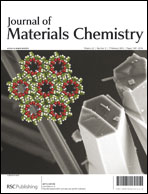Biofilm detachment by self-collapsing air microbubbles: a potential chemical-free cleaning technology for membrane biofouling
Abstract
Microbubbles (MBs) have been known for their ability to generate pressure waves through shrinking and subsequent self-collapsing phenomenon. In the present study, we have investigated the potential of air MBs for biofilm detachment from a


 Please wait while we load your content...
Please wait while we load your content...